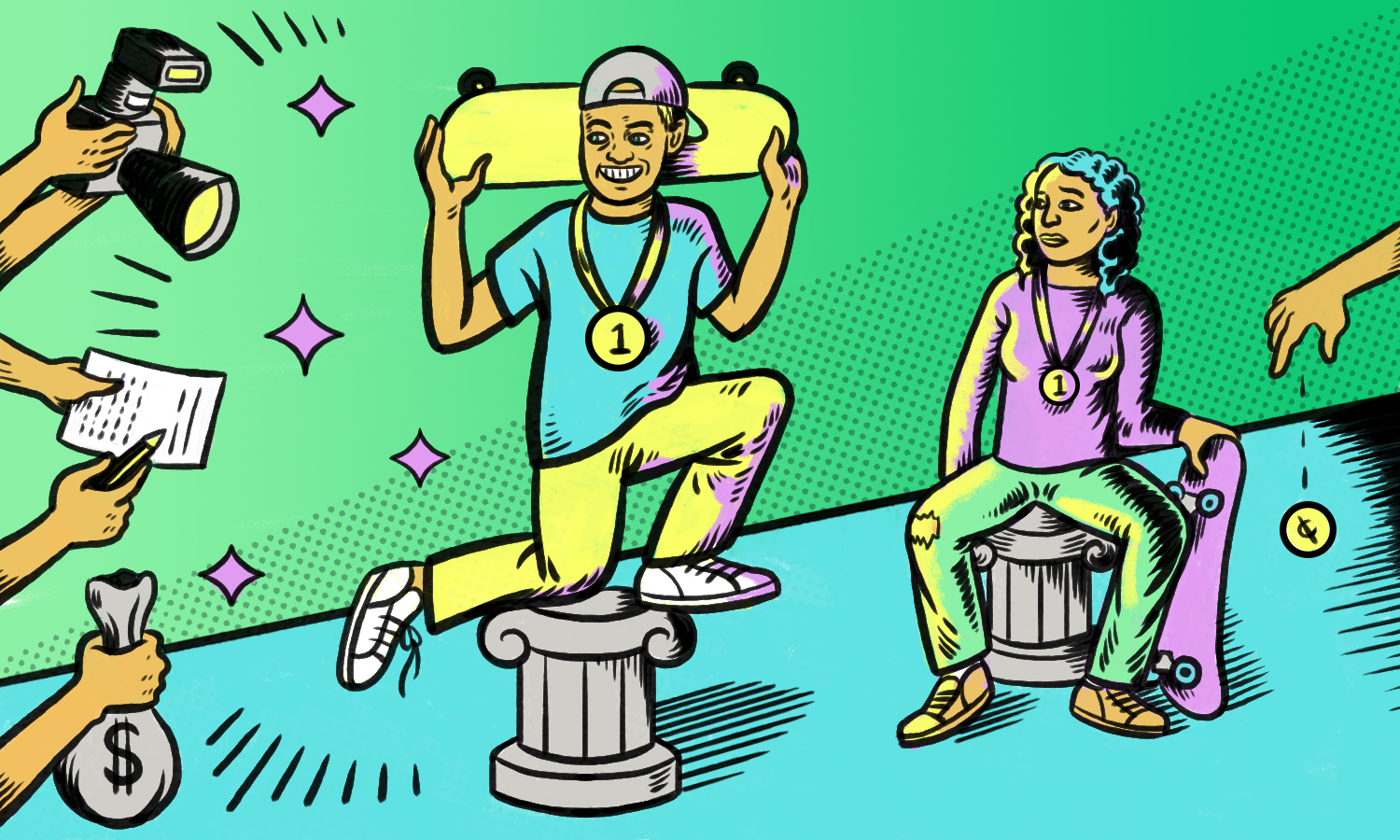This week I wanted to take a look an interesting article titled, “How a Group of Women Fought for Equal Pay in Contest Skating,” and analyze the overall quality of it. I want to be able to show you why this is a credible story to read, what makes it credible, and then give it a final grade that represents my feeling on how well this article was written.
If you’ve read my previous blogs, in the past I’ve mentioned that skateboarding is being introduced to the 2020 Tokyo Olympics, and that will definitely include a men’s and women’s section. This is great news, but one touchy aspect that is associated with competitions is the amount of pay each athlete earns. In the past, women of the professional skate world were making significantly less than men for winning a competition. The article states that back in 2005, the men’s cash prize for the X-Games was $50,000, while the women’s was only $2,000, even though they take place on the same exact course. In order to find out how these women were able to close this wage gap, and bring an equal pay to both men and women competition skaters, you’ll have to read the article here. As for now let’s take a look at how well this article was reported.

There’s multiple reasons I found this article to be very credible and well written, so I’ll try and sum up the main reasons why this is a great read. The first thing I noticed was that the article uses multiple sources, and doesn’t rely on the same source for information throughout the article. The author, Ian Browning, uses a total of 9 or 10 sources to further back up information he’s included in the article, or help educate the reader on a topic he has mentioned. He references sources and information from The New York Times, Pew Research Center, the Department of Labor, California Legislative information, the non-profit CalMatters, and to top it off, the founder and president of the Women’s Skateboarding Alliance, Mimi Knoop, someone who experienced the wage gap first hand and wanted to change it. The great part about his use of these sources, is that he links, when possible, every source to the webpage he received the information from, so that the reader can reference the original source.
I believe by including well-known sources such as Department of Labor, The New York Times, etc., Browning has increased the quality of the article by assuring the reader that this information is credible as well as allowing the reader to educate themselves by linking the original content, or where he learned the information from. If Browning hadn’t directly linked those sources, or used sources that weren’t a, “.org” or well-know news outlets, the story would be harder to verify. He allows the reader to verify everything he’s saying is factual, and includes pictures from the time that Mimi Knoop and her alliance started fighting for equal pay. The inclusion of pictures helps boost credibility because people tend to believe a story more often when there is visual evidence of it happening, and this article includes many pictures that clearly include Mimi and the alliance.
As for the reporter himself, I couldn’t find a lot of information on him and the only online sources I could find was from his Twitter and Instagram. He seems like he is heavily involved in the skating industry and would be somebody who has knowledge on this subject. His first article published on Jenkem mag was from 2016, so he has been blogging for the site for at least 4 years, giving him more experience and credibility than someone who is just starting out. I believe that Browning did a good job reporting the issues of the subject, and I don’t feel that he failed to ask any questions. He stuck to what was most important to the reader, especially since the topic of equal pay could be spoken about in great depths, and represented the wage gap issue in a fair manner. He showed that it was an issue in society and not just in skateboarding, but also gave detail on how a small group of women have influenced the equal pay we see in competitions today. I couldn’t see any bias from this writer, and it didn’t seem like he was highlighting one perspective, even though his experience in the skating world, being a guy, is most likely opposite from what he’s reporting on. It would have been easy for him to defend his own gender, but I believe he gave a fair voice to the women and subject he wrote about as well as linked to very credible, and informative sources that help educate the reader on past examples of the ongoing war of equal pay.
So, to sum up what I thought about this article, the information, and it’s credibility, I’ll give it a letter grade. *Drum roll please.* I give this article an A. I found this article to be very informative, interesting, easily readable, credible, and covers a subject in the skateboarding industry that can translate to industries as well. He represented the Women’s skate industry well and gave them a solid and fair voice without over supporting him or showing bias to his own gender. I really liked this article, and will be continuing to read blogs from Browning.